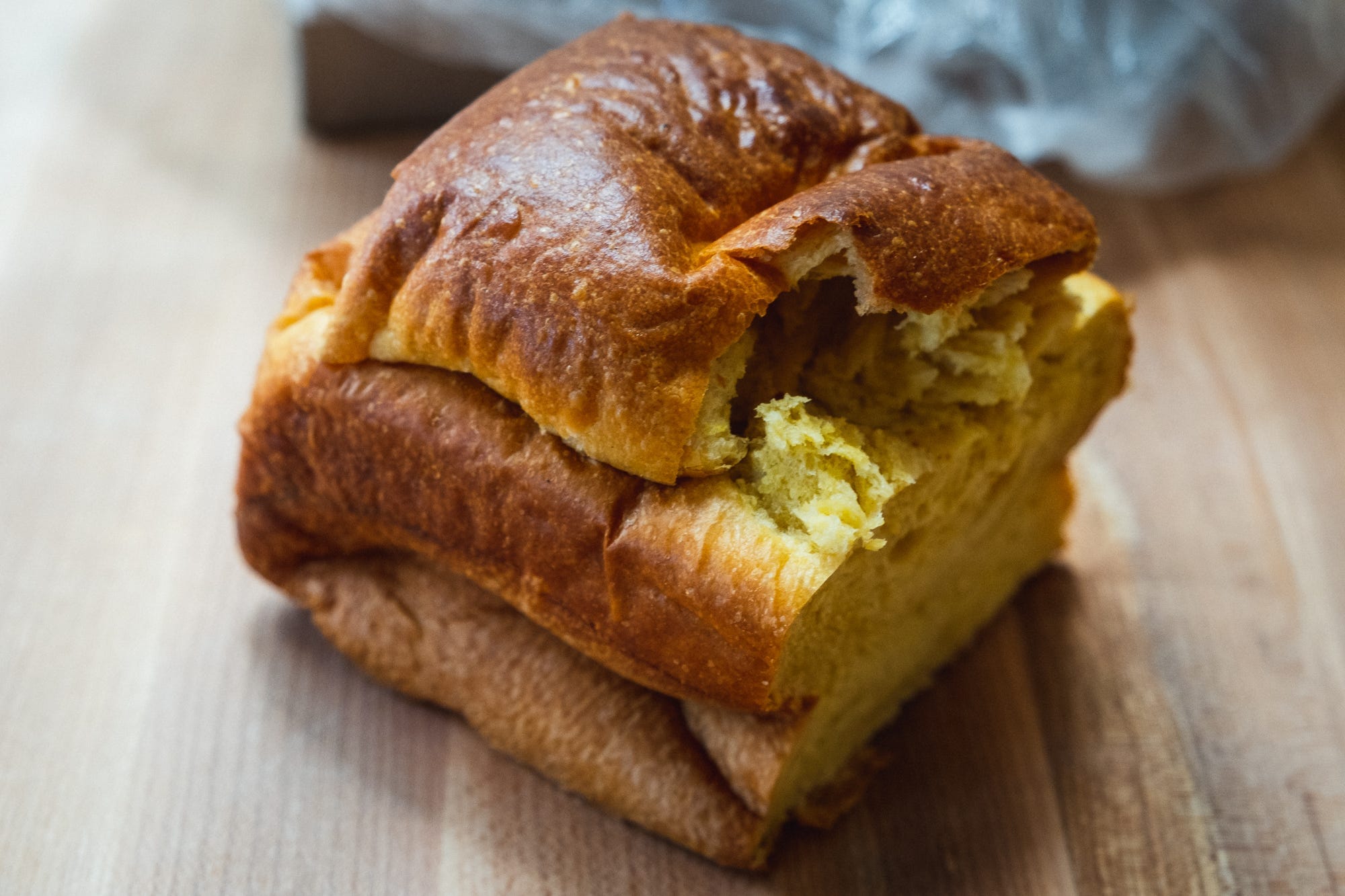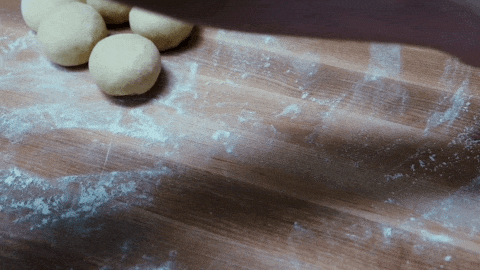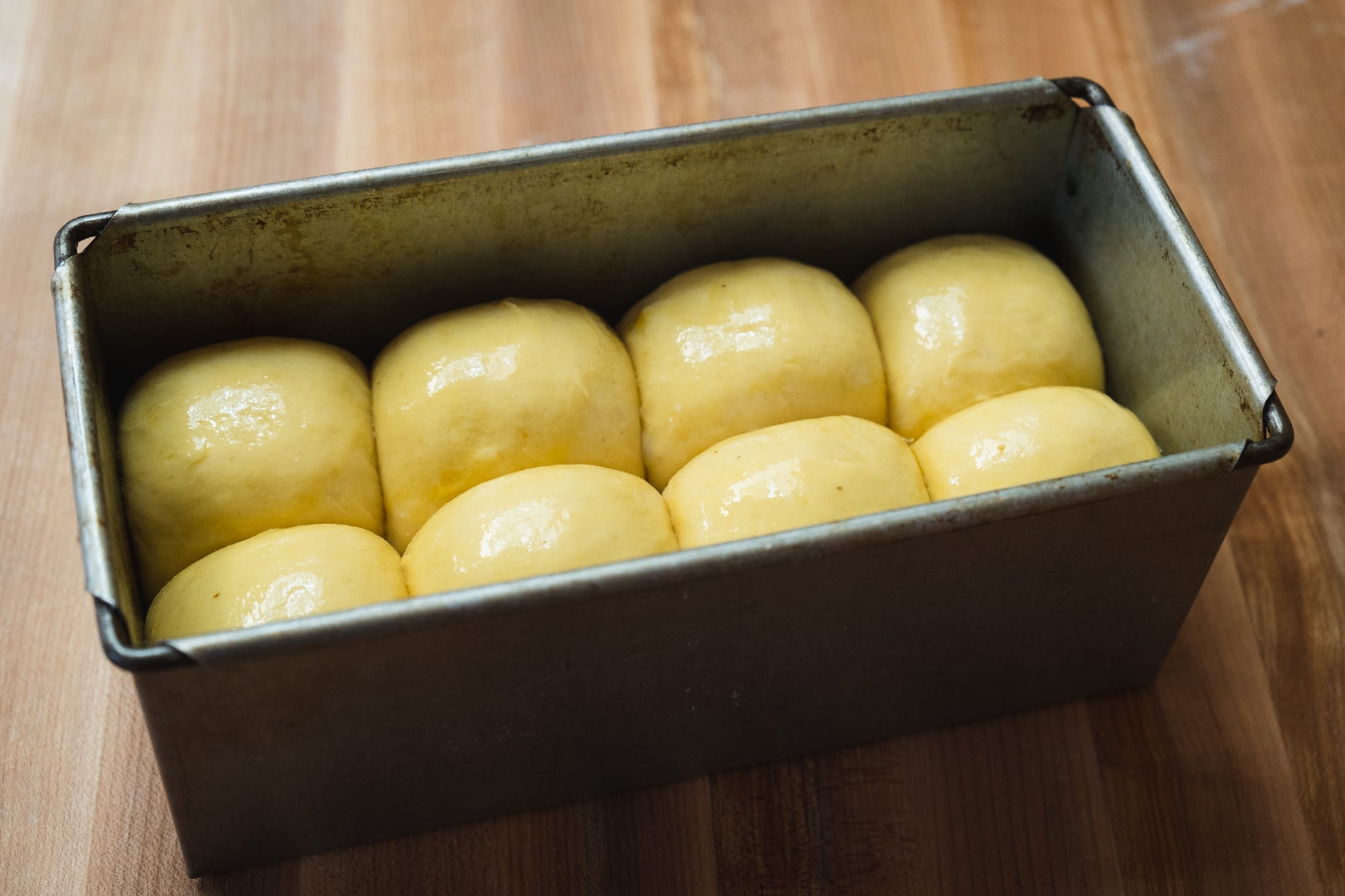I got nothin

So I had the genius idea to quickly convert my Edible Boston potato buns recipe into a pan bread recipe this week, something I’ve had in mind ever since I finished that recipe. I figured it would be easy-peasy—scale the recipes appropriately, bake off one set of them, take some nice photos, write up the recipes, and send it out. Most of the time, this sort of seat-of-the-pants, quick turnaround approach to recipe development works pretty well, since so many of my recipes are based upon templates I have tested and tweaked already for years.
Alas, not so in this instance. I’ve made all three of these—the master potato bread, whole-wheat, and brioche—a few times now this week, and they have all suffered from the dreaded post-bake suck-in that you can see in the photo above, despite having tweaked the formula and the baking method repeatedly in an attempt to avoid it. I’m not convinced that it is a lost cause (not yet, at least), but I realize that I may have set myself up for failure here from the get-go.
The initial goal for the Edible buns recipe was to recreate that impossibly plush, squishy Martin’s-style potato roll texture, using staple ingredients. Though I feel confident that I succeeded at getting close to that, the structure of the crumb appears to be so soft that, while it can support the weight of a 100g-sized roll, it lacks sufficient backbone to buttress a full-sized loaf, even after having lowering the hydration and/or reducing the percentage of instant potato flakes in the formula. Other things I’ve tried have included lowering the oven temperature to 300 (from 350) and baking for a full hour; turning off the oven at the end of the bake and leaving the loaf in the oven for another 15 minutes; and removing the loaf from the pan and returning it to the bare oven rack to set the sidewalls.
I’m not even sure at this point whether it is the crust or the crumb that is more important for creating structure in a soft-textured bread. And I am well aware that there are breads that are so soft that they require hanging upside-down until the crumb has cooled and set completely (namely pannetone), something I’d rather not resort to here.
Like I said, I haven’t given up yet, but it’s clear that this one is going to take some time to figure out. I don’t miss much about my days as a test cook, except for one thing: the luxury of having weeks at a time to getting to work on a single recipe in order to get it just right. I’m fortunate in having years of experience with this recipe testing, which most of the time means I don’t need to spend anywhere near that long on a recipe and still have it work reliably. But there are exceptions, including this one.
All of which is to say that I don’t have a recipe to share this week, and I don’t know when this one will be completed. Some things simply do not work out as planned, and I can’t promise to always have something new to share with you each week. I can promise that I won’t ship a recipe until it is really ready for others to use, and I hope that is ultimately more valuable to you all than new, but not-necessarily-well-tested recipes on a regular basis.
I do have one thing to share, which is this gif of me shaping dough into balls for brioche de Nanterre, the brioche that is made by nestling small balls of dough in two rows side-by-side in a pan.

A reader of my Edible buns story emailed the other day for advice on how to shape the perfectly round roll, and my answer was: practice. Which is true, but maybe what he was looking for was something more concrete, hence the gif. (And no, this isn’t the only way to shape a small ball, but it is one way, and an easy one for beginners to pick up.)

—Andrew





Member discussion